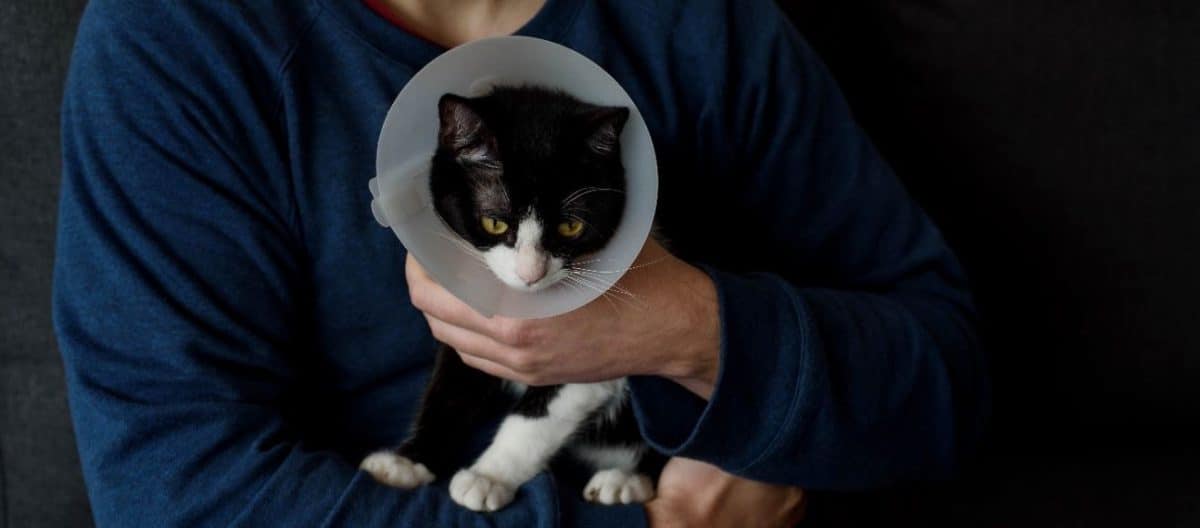80% of dogs and 90% of cats in the U.S. are spayed or neutered, but why is that so high? It’s a procedure that many pet families follow when they first get a new furry member of their family, but why do we do it?
We constantly hear vets urging new pet parents to put their pets through this procedure, but what are the benefits of spaying and neutering? Potential risks associated with removing your pet’s reproductive organs can oftentimes go overlooked due to the pros of this common surgery heavily outweighing the cons.
These surgical procedures are commonplace in our society, but there’s still one ambiguous question about the process; when’s the ideal time to get the procedure done? Some like to wait until the pup or kitty is full-grown, but the recommended age is six to nine months. The benefits can also differ based on when the procedure is done.
Medical and Behavioral Benefits
The main reason to spay or neuter your pets is to control the pet homelessness crisis in the U.S. Millions of healthy dogs and cats are being euthanized each year because they can’t find a home. By choosing to neuter or spay your pet, you’re playing a role in eliminating the pet homelessness crisis.
There are an estimated 6-8 million homeless animals entering U.S. shelters every year. Less than half of these animals are adopted, resulting in the rest of them being euthanized. Spaying and neutering are the only foolproof methods of birth control for dogs and cats, thus decreasing the birth of homeless animals and lowering the homelessness rates.
Don’t contribute to the problem; be a part of the solution by being a responsible pet owner.
Improves Male and Female Health
Spaying females prevents uterine infections and breast tumors. This can prevent cancer in your female pet and help them live a longer, healthier, and more favorable life. For males, the procedure can prevent testicular cancer and prostate issues.
Avoid Female Urination
Female cats typically go into heat four days every three weeks during breeding season from March until September. During this time, they’re prone to howling and urinating outside their litter box, and you don’t want to clean all that up! Avoid the unwanted female urination associated with going into heat by spaying them. This will prevent your cat’s system from going into breeding mode.
Keep your Pooch at Home
Like most other males, your male dog will do anything to find a mate. This even means finding impossible ways to escape from your house. If he breaks free, he runs the risk of getting hit by a car, interacting with other dogs or animals, or being lost forever. With the neutering procedure, this instinctual desire to find a female can be dampened. Neutering your dog will also decrease the likelihood of your dog mounting other dogs, or people, at the dog park or during walks.
Risks of Spaying and Neutering
While the benefits of spaying and neutering your pet severely outweigh the risks, there are some risks associated with the procedure. Like any surgical operation, things can go wrong for your furry family members when the surgeon is doing their job. But don’t fear, veterinarian surgeons are extremely experienced in this procedure.
Spaying and neutering are the most common procedures for veterinarian surgeons to perform. Because of this, the risks are vastly decreased, but some do still pertain.
The spaying and neutering process is meant to remove reproductive hormones that cause mating behaviors. These hormones are natural and affect your pet’s overall health and behavior, so taking them away can also impact your pet. The procedure can change the entire personality of your dog or cat because you’re removing natural hormones that make your pet who they are.
After the surgery is performed on your pet, the risk of getting hip dysplasia for neutered male dogs increases twofold compared to intact males. The condition is more frequent for certain breeds over others, but those chances increase even further after being neutered. Risks remain regardless of the surgery’s time frame, but that also remains a point of contention for pet owners.
Tips Post-Surgery
This procedure for your fur baby can be frightening and confusing, especially after the surgery. So, you’ll want to do everything you can to make your little family member feels safe and comfortable during their recovery. We recommend these tips.
Quiet Place
Coming home to hectic, chaotic noise is the last thing you want for your pet. Make sure you set them up in a calm place to recover with their favorite toys and blanket to make them feel at home. Separate your pet from other household animals to ensure they avoid added excitement.
Prevent Licking or Scratching
This might be the most important tip we can give you. Itching or scratching the surgery site can cause the incision to reopen and become infected. To be extra safe, we recommend wearing an Elizabethan collar, otherwise known as the cone of shame.
Monitor Surgery Area
Make sure to monitor the incision site every few days to ensure the area is healing correctly. Continue checking until fully healed in a few weeks.
Prevent Running or Jumping
The act of running and jumping is strenuous on a pet’s body and can sometimes reopen incisions made during surgery. Always try to keep your pup or kitty calm to avoid excitement for at least two weeks after surgery.
With that being said, procedures like spaying and neutering can sometimes rack up the cost of vet bills for your pup or kitty. But we have an answer: pet insurance from Prudent Pet. We offer pet insurance for your pup or kitty!
Our plans will help reduce the total cost of vet bills by reimbursing you for spaying and neutering surgery costs, accidents, and medicine. Get a quote today and start getting reimbursed on vet bills for your fur baby.




